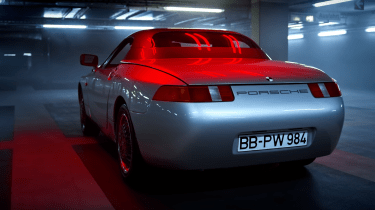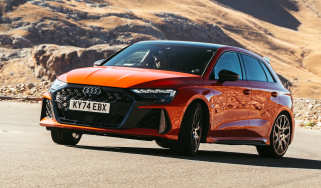Porsche 984 Junior – dead on arrival
This miniature marvel could have seen Porsche enter the ’90s with a truly affordable entry-level sports car
In the weird world of car connections there are few more improbable tales than the one about the ill-fated baby Boxster that owed its existence to the original SEAT Ibiza. This stranger-than-fiction story starts with SEAT’s lofty plans for the ’80s, hatched after the split from its sugar daddy, Fiat. To help achieve these dreams and deliver the first-gen Ibiza of 1984 it hired the finest car consultants from across Europe, including Giugiaro for styling and Karmann for body engineering. Porsche was signed up to take care of powertrains and duly delivered a new engine and gearbox package before boldly pitching an additional use for it: would SEAT be interested in going splits on a mid-engined sports car? Amazingly, the Spanish said yes and design work started under the nickname ‘Junior’, only for VW to take over SEAT in 1986, after which the collaboration was cancelled.
Over in Weissach, however, they weren’t giving up on the idea of an entry-level roadster. The 924 had always been problematic for Porsche, sneered at for its use of VW hardware and painfully unprofitable thanks to the cost of having Audi assemble it. This new car, now freed of any link to downmarket SEAT, could be Porsche’s way to make a new baby that avoided the 924’s failings. The Junior became a solo project and development pressed ahead under the internal code number 984.
> Volkswagen W12 Syncro – dead on arrival
In March 1987 a British magazine ran long-lens photos of a naked roadster bodyshell being carried by a forklift deep within Porsche’s engineering centre. The accompanying article identified it as evidence of project 984 and added that discussions were ongoing as to how it would be powered. The engine could be a flat-four derived from the six in the 911, it might be a V6 based on Hans Mezger’s Indianapolis racing V8, it could even be a V4 created by slicing a 928 engine in half. However, it was also claimed that SEAT’s ‘System Porsche’ unit was in the running, as were a pair of VW motors: the EA827 from the Golf GTI and the flat-four ‘Wasserboxer’ from the T3. As if the 924 hadn’t earnt enough ‘van engine’ jibes to last Porsche a lifetime.
Perhaps mindful of this, engineers eventually committed to creating a brand new 2-litre, 16-valve flat-four, targeted to make between 120 and 150 horsepower with the possibility of more when fitted with a turbocharger. All they needed to proceed was sign-off from management for this and the entire 984 project. To whet the bosses’ appetites the R&D team built the car you see here, wearing 928-inspired styling along with two technical novelties: a folding metal roof and a multi-link rear axle of the type later used under the 993. The rest of the car was a glorious mongrel, what with its 944 dashboard, 912 gearbox, 911 brakes and steering, and the 2.4-litre engine from an old 914, tuned by Willibald to give a little more pep.
This neatly finished bitsa was ready for a management ride and drive session in September 1987, which was unfortunate timing because the following month stock markets crashed, Porsche sales nose-dived, and the company embarked on a frantic round of cost cutting. The 984 was a brand-new model with a bespoke engine intended to arrive in showrooms starting at just 40,000DM (£12,000 in 1987 money, or the same as a contemporary Toyota MR2 T-bar). Denied the economic sense of partnering with another car maker it presented a tenuous business case as it was. Once financial times got tricky it was doomed to feel the grey hands of accountancy around its neck and by March 1988 the lone 984 demo car had been parked up for good. Fortunately for carchaeologists, Porsche has always been slow to throw out unwanted stuff and the car survives to this day in the corporate museum.
This story was first featured in evo issue 298.








